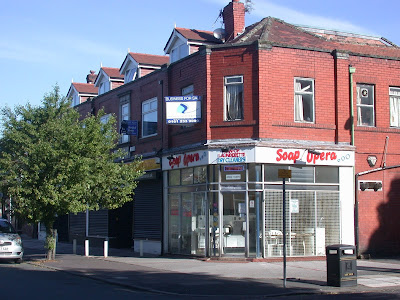Now here is one for the diary.
On Sunday September 1st Victoria Baths will be staging a Local History Fair, with stalls, displays, workshops, archive films and guided tours. All this and a Cafe on site, Children’s trail and free parking.
So “visit Victoria Baths, Manchester’s amazing grade 11 listed pool and explore the local history of the Greater Manchester area.
This is one of the regular Open Day events, the first Local History Fair in September 2010 had over 600 visitors.
As well as a range of stalls there will be additional activities including workshops on topics of interest to local history groups and members of the public.
So far the organisers have planned a couple of workshops on researching family history in the First World War – one by the Lancashire & Manchester Family History Society and one by historian Bill Williams on how he researched his uncles’ involvement in the First World War.
As well as the Local History Fair, visitors and stall holders will be able to view the building and go on one of the guided tours on offer throughout the day, if they wish. Hot and cold refreshments will be on sale in our café and the Souvenir Shop will be open. There will also be specially designed children’s activities.
There is a photo of the previous Fair on the “Beyond the Baths blog"
http://beyondthebaths.wordpress.com/history/local-history-groups/ 0161 224 2020 or email history@victoriabaths.org.uk.
Picture; courtesy of Victoria Baths
On Sunday September 1st Victoria Baths will be staging a Local History Fair, with stalls, displays, workshops, archive films and guided tours. All this and a Cafe on site, Children’s trail and free parking.
So “visit Victoria Baths, Manchester’s amazing grade 11 listed pool and explore the local history of the Greater Manchester area.
This is one of the regular Open Day events, the first Local History Fair in September 2010 had over 600 visitors.
As well as a range of stalls there will be additional activities including workshops on topics of interest to local history groups and members of the public.
So far the organisers have planned a couple of workshops on researching family history in the First World War – one by the Lancashire & Manchester Family History Society and one by historian Bill Williams on how he researched his uncles’ involvement in the First World War.
As well as the Local History Fair, visitors and stall holders will be able to view the building and go on one of the guided tours on offer throughout the day, if they wish. Hot and cold refreshments will be on sale in our café and the Souvenir Shop will be open. There will also be specially designed children’s activities.
There is a photo of the previous Fair on the “Beyond the Baths blog"
http://beyondthebaths.wordpress.com/history/local-history-groups/ 0161 224 2020 or email history@victoriabaths.org.uk.
Picture; courtesy of Victoria Baths

























.png)






